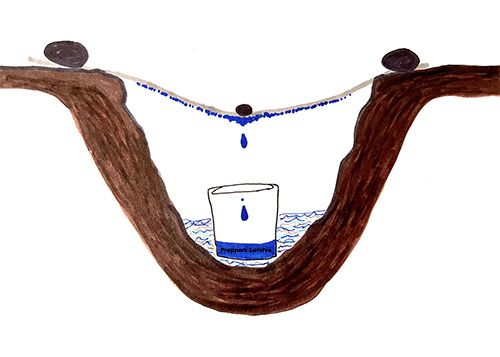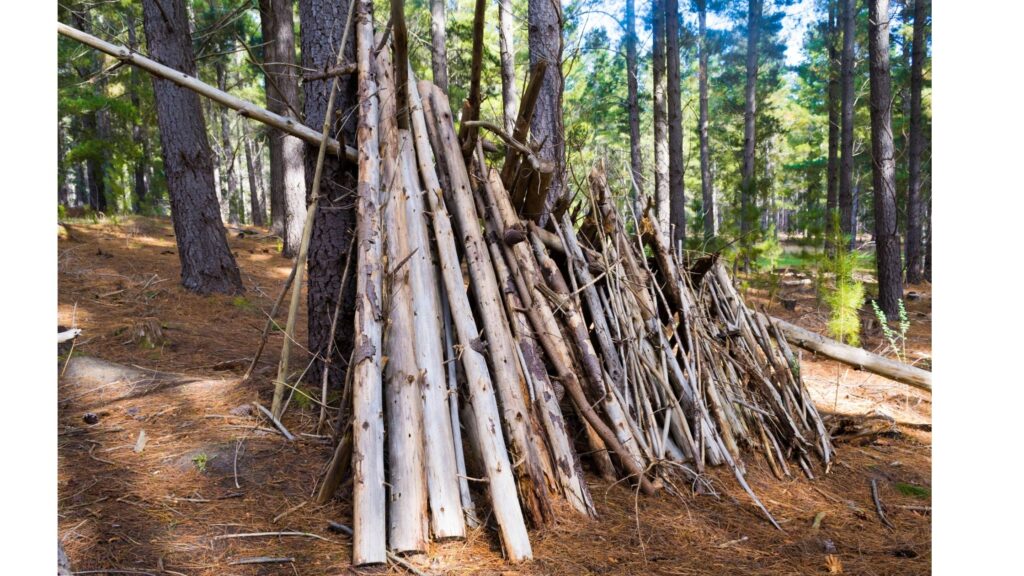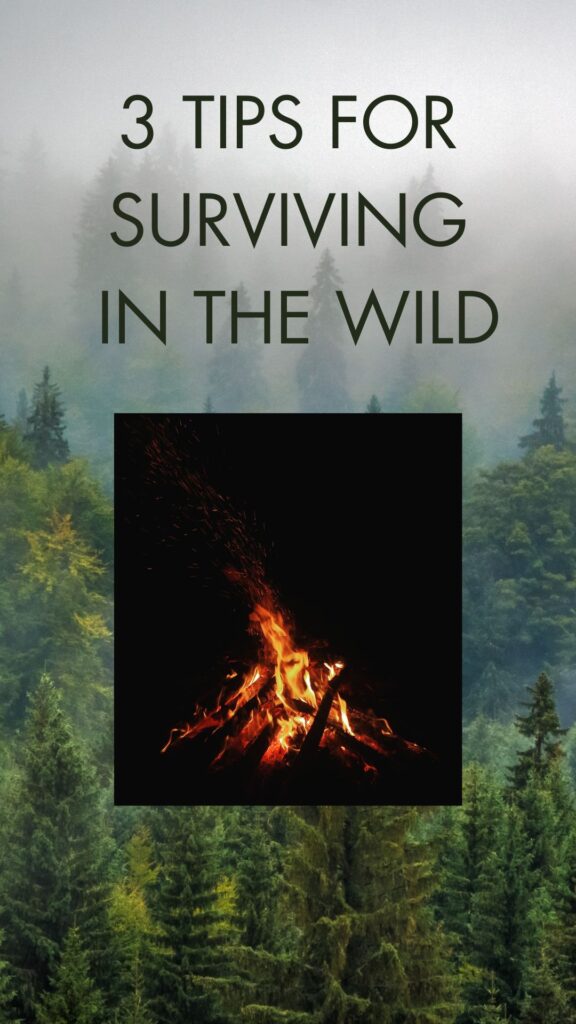Now that winter is behind us, it is time to consider getting off the beaten. There’s magic in the forest’s solitude — you’re surrounded by life yet alone in a sometimes savage world where things can hurt. You’ll probably lose your way more than once, gathering good tales for later campfires. However, first, you must know how to survive when lost in the wild.
You become keenly aware of the necessities of survival in such circumstances. How can you improve your chances of returning to your loved ones alive? Here are three no-nonsense tips for surviving in the wild.
3 Tips for Surviving in the Wild
The Essentials of Survival Mother Nature provides human beings with everything they need to survive. However, people have divorced themselves from these realities in their comfortable modern lives. Air is available anywhere, but you also need a minimum of water, warmth, and protection from the elements. Here’s where to find them in a mountain survival situation.
1. Water
Learning to find and purify water in the wild is your first step to surviving in remote terrain. Depending on how long your hike is, you’re unlikely to carry enough to fulfill your needs over the long term. While four to six cups per day might cut it for office work, your needs can vary in the wild — especially when exerting yourself. Tips for Surviving in the Wild
Fortunately, you’re in a good place. Mountain ecosystems provide 85% of the water most municipal systems depend on, so there’s ample supply. Your problem is finding and purifying it.
Finding Water in the Mountains
To find water in the mountains, follow these tips:
● Look down: Gravity reigns supreme when rain falls. It often collects at mountain bases — sometimes, you’ll even get lucky and find a spring. If not, digging down a few inches often reveals liquid.
● Follow a game trail: Critters get thirsty, too. If you know how to track by observing broken limbs and trampled foliage, you can follow them to the source.
● Seek cover: Plants also need water. If you see a patch of dark green in an otherwise brown landscape, head that way.

You can also collect rainwater by gathering dew off plants or making a solar still. Get dew by placing large leaves in a cheesecloth, squeezing and emptying it into your container. To build a simple solar still, you must: Tips for Surviving in the Wild
● Dig a hole about 3 feet by 4 feet.
● Dig a smaller cavity inside where you place your water container.
● Add vegetation to increase moisture without putting it in the container.
● Cover the hole with a plastic sheet, placing large rocks along the outside edge and a smaller one in the center, creating a dip so the water flows into the container after collecting on the bottom side of the plastic.
● Wait 24 to 48 hours, staying idle in the shade if thirsty.
Water Purification Tips for Surviving in the Wild
There are multiple water purification methods, although most are not foolproof. Your best bet is to use a combination of systems to remove the most impurities. Some techniques include:
● Filtering layers: Activated charcoal is a popular one. Others use cloth or screens to filter particulates. This method takes some practice, so get the technique down before you rely on this method.
● Chemical purification: You can find water purification tablets, often small and easy to carry, but you will need to wait thirty-five minutes before the purification process is complete.
● Boiling water: This ancient method kills an impressive number of organisms, and you might need a fire for warmth, anyway.

● Survival water straw: Depending on which one you buy, it can remove bacteria (such as salmonella, cholera, and E.coli) and parasites (such as giardia and cryptosporidium) from water found in the wild. Most designs are lightweight and simple to use.
2. Shelter
You should try to find your way out while the weather cooperates, but what about when it doesn’t? Even if you get lost during the most pleasant week of the year, you need to sleep sometime, and having protection helps you rest easier. Here are four simple ways you can build a primitive shelter for survival in the mountains:

● Teepee: Select a tree and prop long, large branches against it to create your frame. Cover the outside with smaller twigs, then a layer of leaves and other debris to block the wind.
● Tarp: Use a stick to prop one end open as an entrance, using rocks or string to secure the other edges of your tarp over you.
● A-frame: If you can find a branch that looks like a Y, stick the bottom in the ground. Place another one in the crack with the end descending to the ground and build up both sides, using the same technique you’d use for a teepee.
● Dug-out shelter: This shelter can be coziest but takes the most energy because you have to dig. Find soft dirt near a cliff’s face, hollowing out a small cave if possible. Otherwise, dig into the earth, covering the top with a tarp or branches and leaves.
Remember, you aren’t building a vacation resort — bigger isn’t better. The smaller you keep your shelter, the better your body heat will keep it warm.
3. Warmth
You must know how to start a fire to survive in the mountains. Here, too, you can use several techniques and tools to make your life easier.

● Lighters and matches: Easy, but you must keep them dry. Wrapping them in plastic and putting them in a waterproof container helps but isn’t foolproof if you dunk in a rapidly moving stream.
● Steel flint: You can find flint and steel firestarters as parts of many survival kits. If you wear a paracord bracelet, check yours — it might have one attached. These are useful because water won’t destroy them.
● Steel wool and battery: If you have steel wool and a 9-volt battery handy, rubbing the nodes with the wool creates sparks you can add to kindling to start a blaze.
● The bow drill: If you have nothing but a string, you can make a primitive bow drill and a fireboard. This method takes skill and practice, so try it at home to feel more confident about your skills in a pinch.
The Extras You Should Have for Surviving in the Wild
The following items aren’t essential in all wilderness survival situations. However, they can be lifesavers in certain conditions and significantly increase your chances of making it home unscathed. Unfortunately, they take extra room and add weight to your pack.
Food
Although you’re sure to work up an appetite, you can live for more than a month without food, so don’t devote excessive pack space to snacks. Hunting and foraging can also supplement your diet. One of your best mountain survival tips is to learn what edible plants grow in your area and how to prepare them if they can’t be eaten raw.
What space you devote to food should be nutrient-dense and calorie-rich. Now’s the time for those monster protein bars and pressed meat snacks containing fruits and seeds to fuel yourself with the stuff your body needs for optimal health. Even Hershey — the chocolate mogul — is rolling out beef bars with quinoa and mango. Snag those puppies for your pack.
Medical Care
Getting hurt in the wild considerably decreases your survival chances. A well-stocked first-aid kit need not take up too much space. An infected cut can spell disaster, so have bandages and antibiotic ointment ready.
Additionally, minor illnesses can lay you low, eating through your travel time and keeping you from getting home. Carry a few essentials like aspirin and antibiotics in your pack.
Keep a sublingual Benadryl or two handy as well. It’s not quite an Epi-pen, but it can be a lifesaver if you forage or touch the wrong thing and discover an unknown allergy.
Protection
Should you carry a firearm if you don’t hunt? Ask yourself how confident you feel that bear spray will work against an angry grizzly.
The one time you want a firearm is when you’re deep in the mountain wilderness in a survival situation. It can help you procure food and defend against four and two-legged threats.
Your one caveat — be careful about showing your weapon to the latter if you’re afraid you might hesitate to use it. Criminals won’t pause and can quickly turn it against you if you waver. You should always practice regularly with your firearm of choice.
Preparing for Your Trip
Perhaps the most important tip for surviving in the mountains on this list is the last one — prepare wisely for your trip. That means doing more than asking for time off work and booking your flight.
Always give your itinerary to someone back home and arrange regular check-ins. Include the area you intend to cover, providing your GPS coordinates if possible. Upon arrival, check for phone coverage and confirm your check-in time with your buddy back in civilization. If you don’t buzz them on or before the appointed day, they know to contact the authorities.
Furthermore, check your pack — even if you take it on every trip. It’s easy to forget you used something and not replace it. Likewise, family members or hunting buddies could borrow an item and fail to return it before your trek. Know what you carry and restock what you must.
Tips for Surviving in the Wild
Mother Nature gave humans everything they require for survival, but her most important gift lies between their ears. Knowing what to do when lost in the wilderness dramatically increases your chances of making it home safely.
These wilderness survival tips cover the basics you need to stay alive. The rest depends on your planning and ability to overcome obstacles until you return to civilization.
Author Bio
Jack Shaw has been writing on men’s interests for over five years, serving as the senior writer and editor for Modded. He enjoys hiking, exploring, and camping — even in the snow. He’s an avid survivalist and has written for publications such as Crow Survival, Outdoor Hacker, and Undiscovered Mountains.
Thanks for visiting Preppers Survive. Before you leave subscribe to our newsletter. If you enjoyed this article on Tips for Surviving in the Wild, please share it on your favorite social media.

The post 3 Tips for Surviving in the Wild appeared first on Survival Prepper.
By: PreppersSurvive
Title: 3 Tips for Surviving in the Wild
Sourced From: www.prepperssurvive.com/surviving-in-the-wild/
Published Date: Tue, 23 May 2023 18:52:00 +0000
-------------------------------------------------------------------------
Did you miss our previous article...
https://outdoorsnewswire.com/survivalist/the-human-factor-john-hearne-discusses-building-better-survivors
 CampingSurvivalistHuntingFishingExploringHikingPrivacy PolicyTerms And Conditions
CampingSurvivalistHuntingFishingExploringHikingPrivacy PolicyTerms And Conditions
